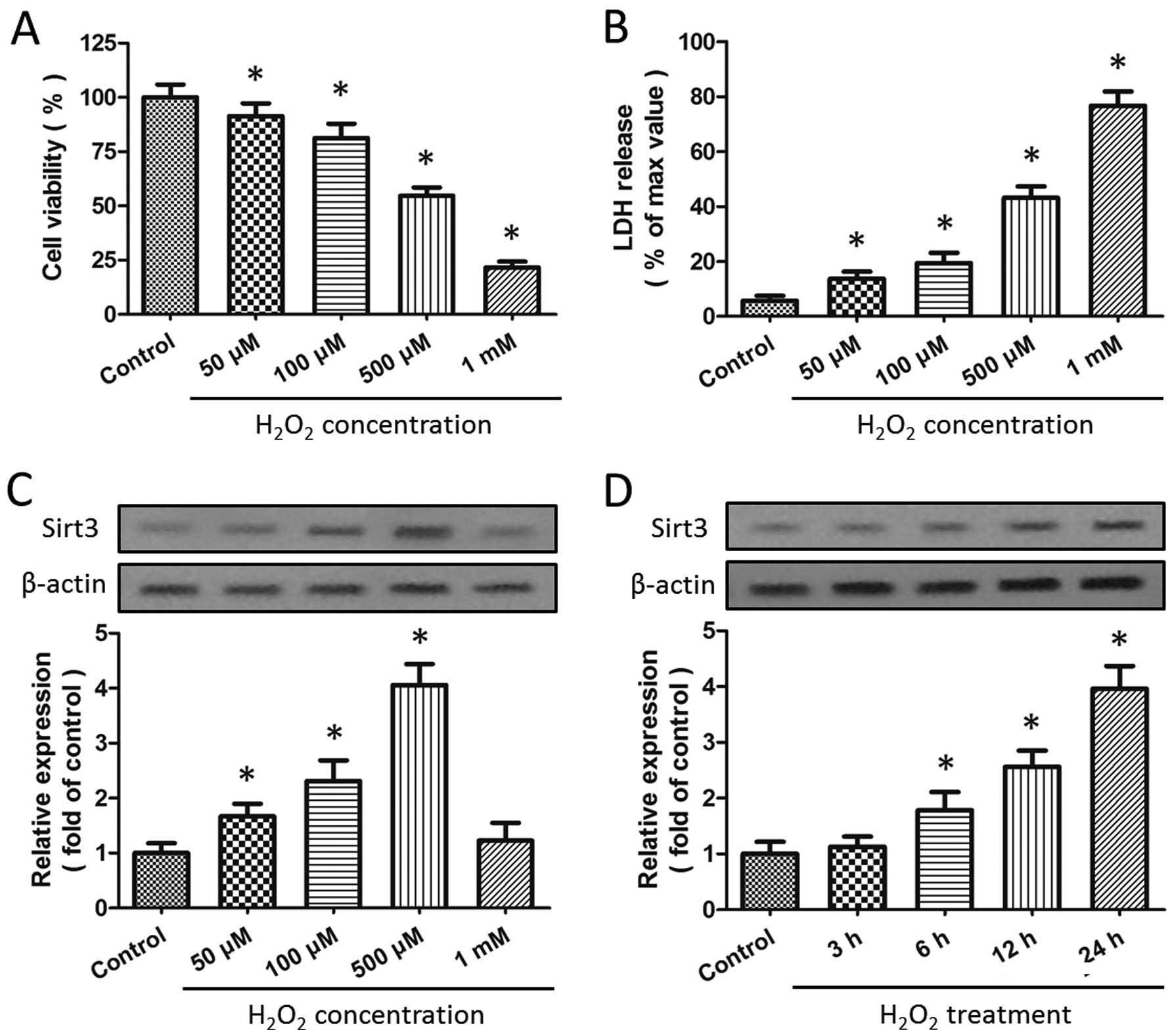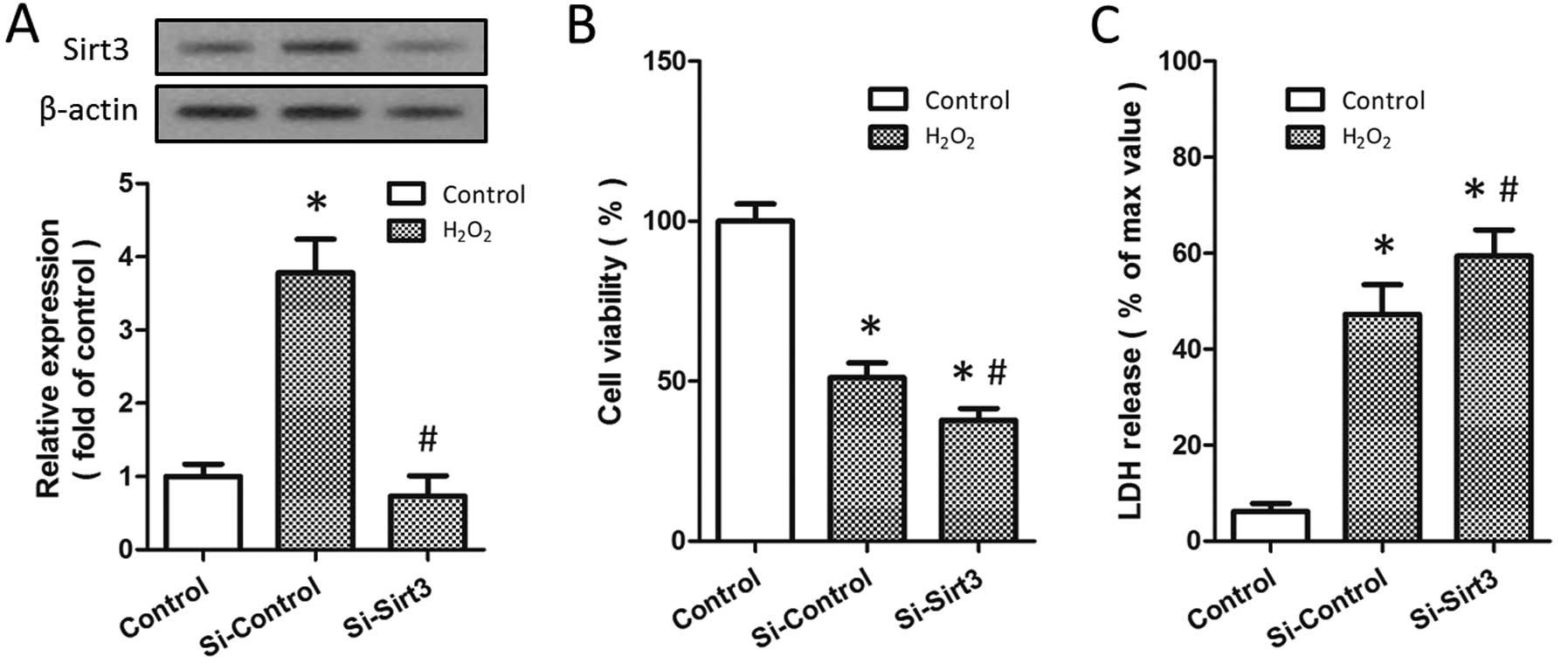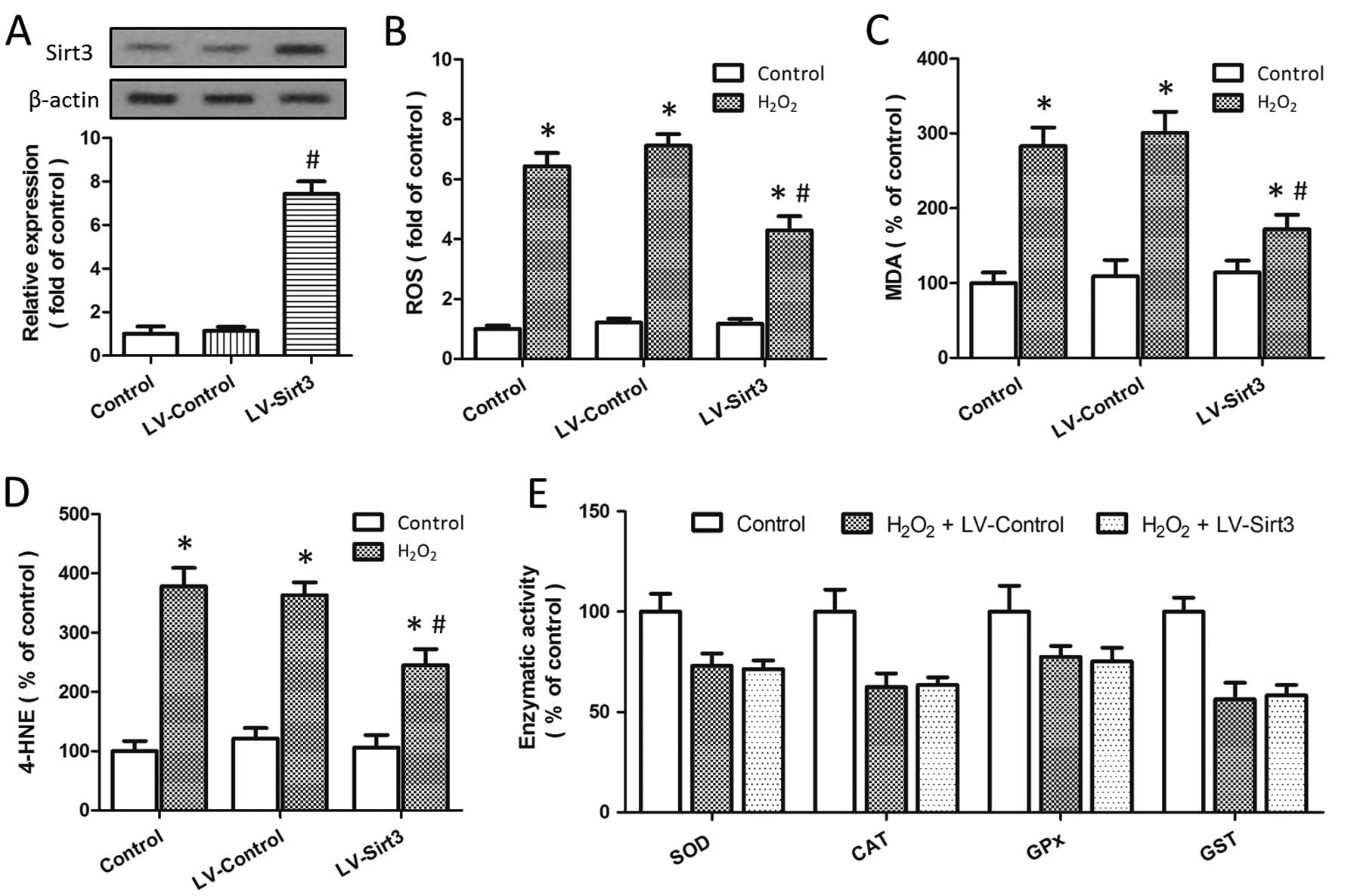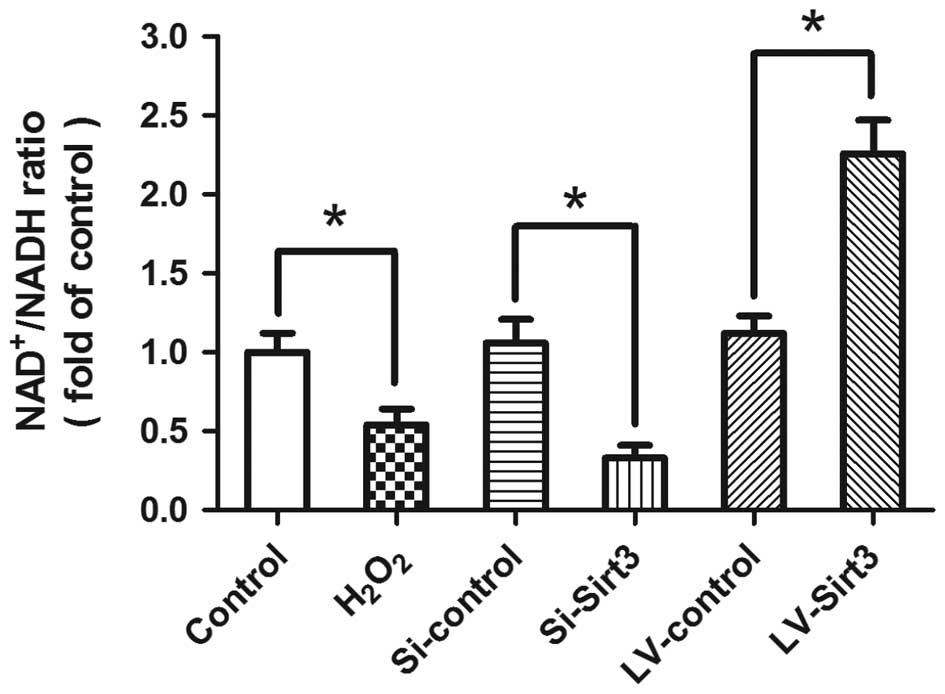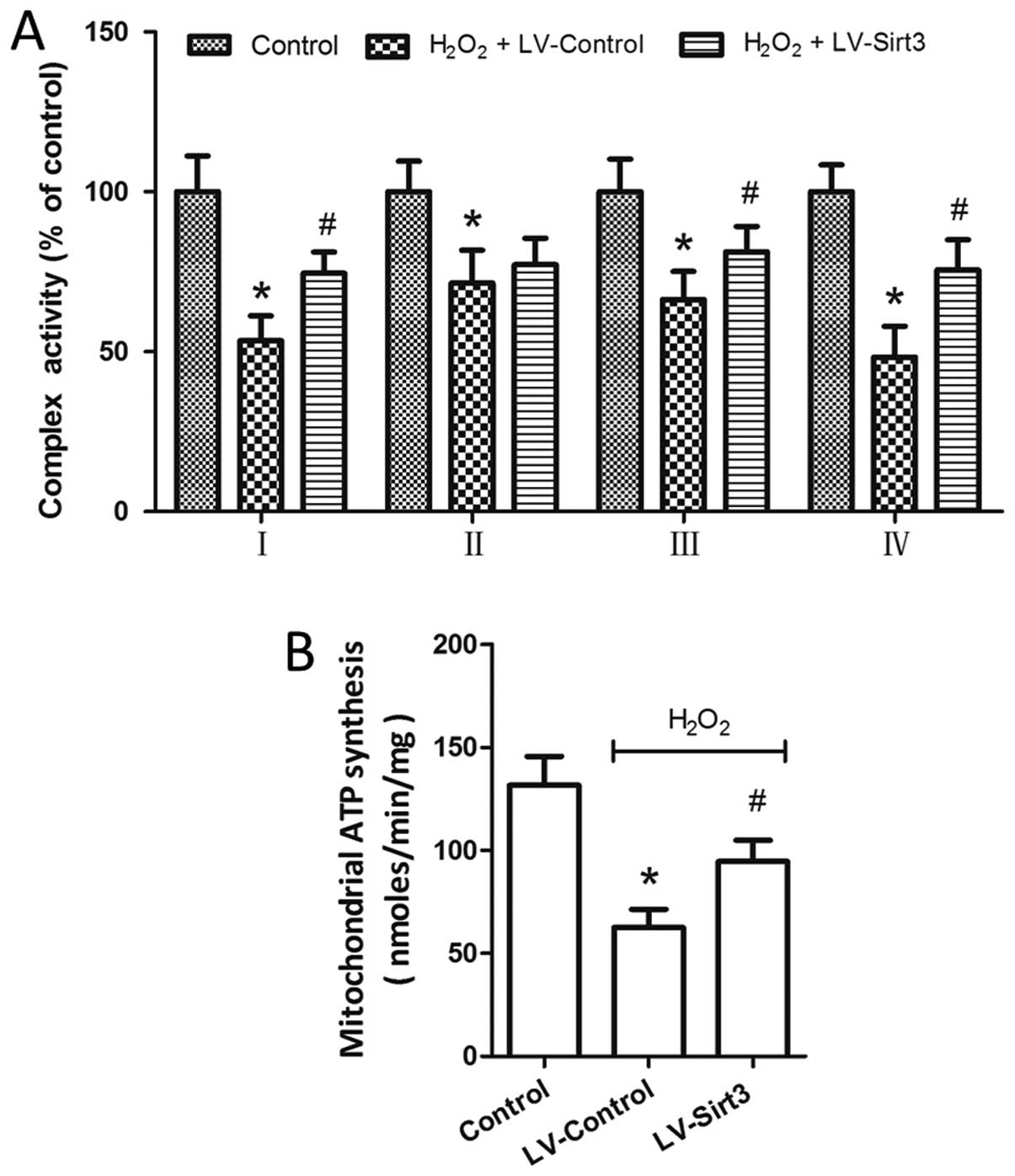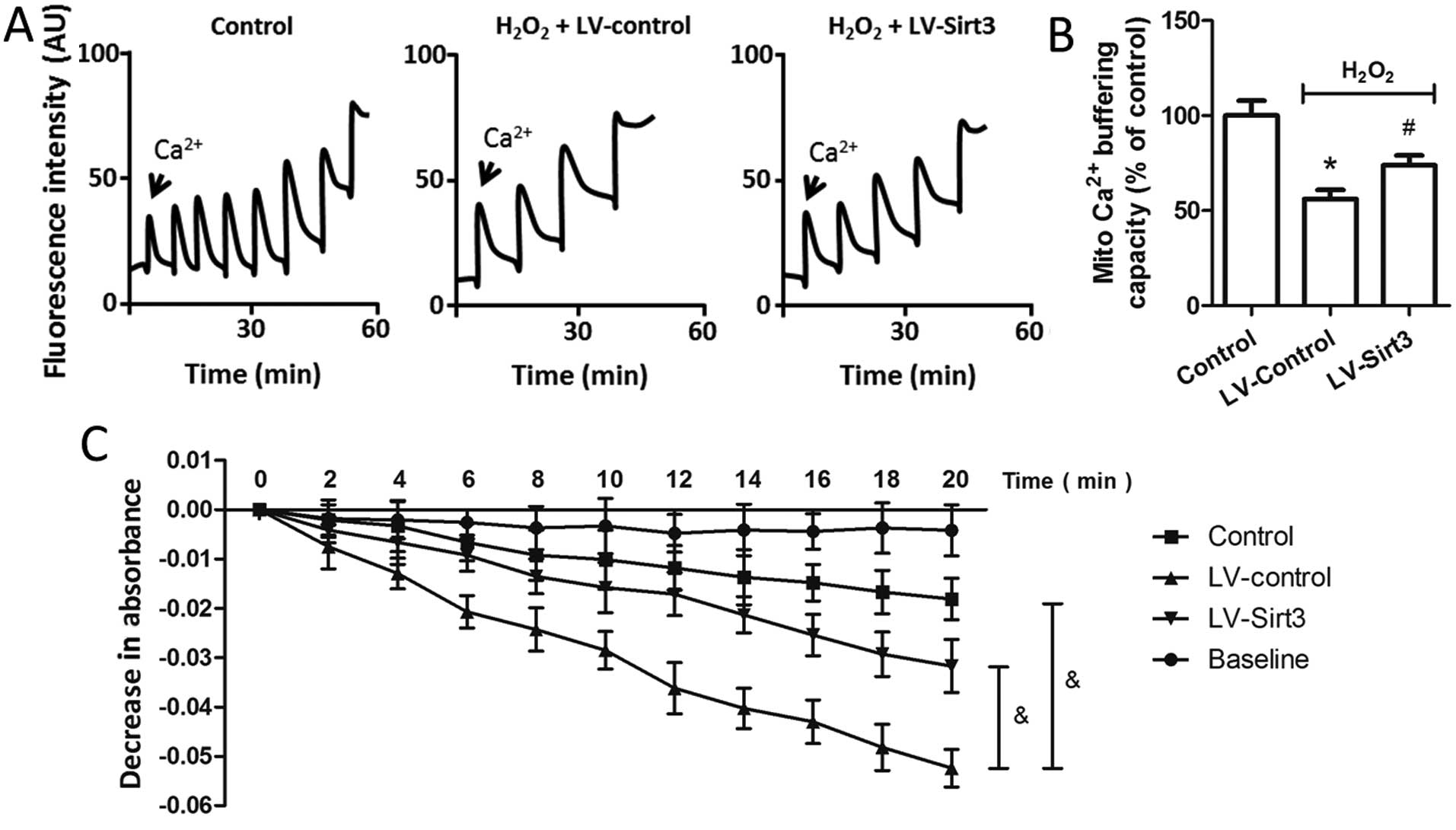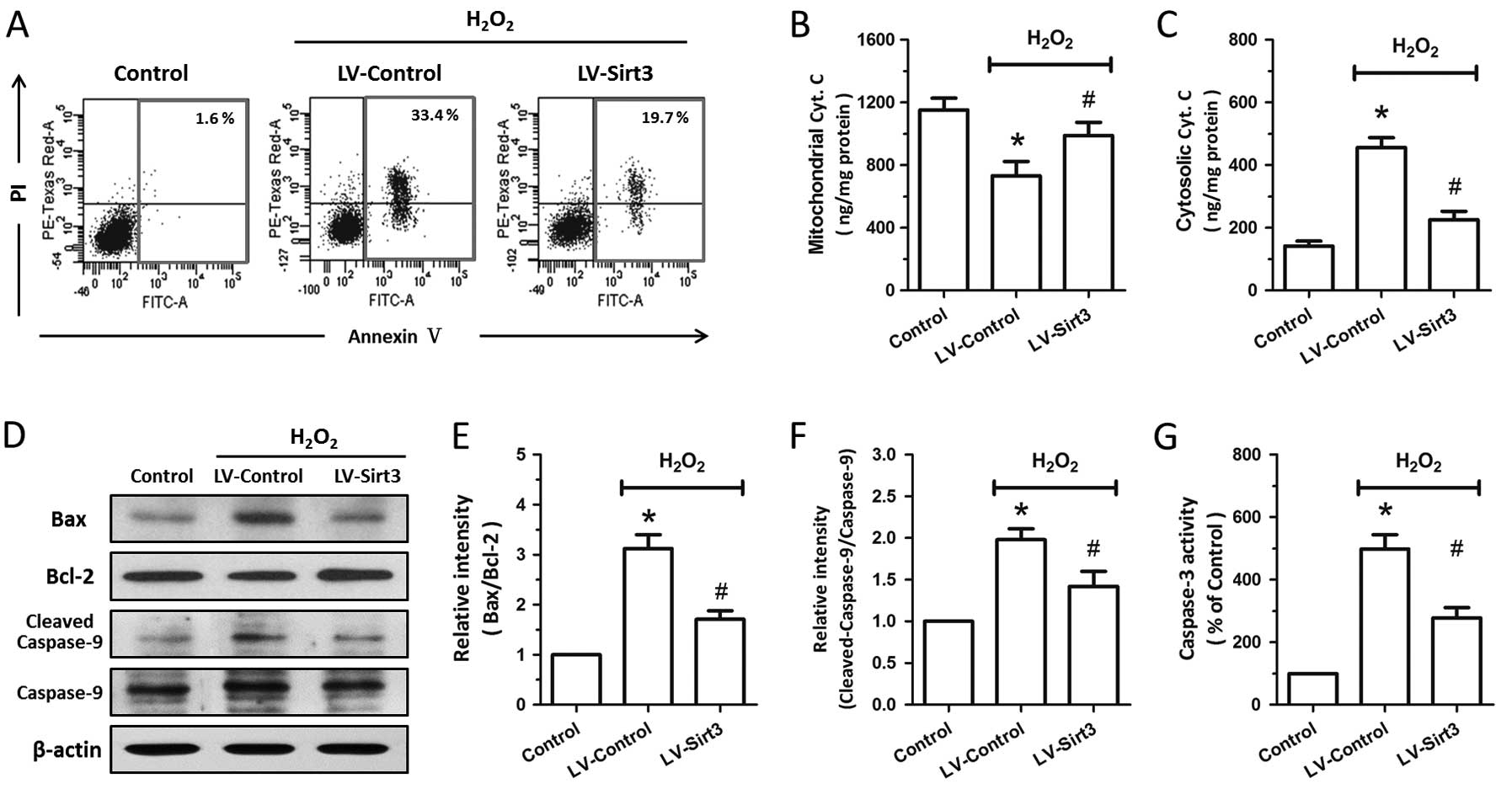|
1
|
Gough DR and Cotter TG: Hydrogen peroxide:
a Jekyll and Hyde signalling molecule. Cell Death Dis. 2:e2132011.
View Article : Google Scholar : PubMed/NCBI
|
|
2
|
Plaine HL: The effect of oxygen and of
hydrogen peroxide on the action of a specific gene and on tumor
induction in drosophila melanogaster. Genetics. 40:268–280.
1955.
|
|
3
|
Halliwell B, Clement MV and Long LH:
Hydrogen peroxide in the human body. FEBS Lett. 486:10–13. 2000.
View Article : Google Scholar : PubMed/NCBI
|
|
4
|
Armogida M, Nistico R and Mercuri NB:
Therapeutic potential of targeting hydrogen peroxide metabolism in
the treatment of brain ischaemia. Br J Pharmacol. 166:1211–1224.
2012. View Article : Google Scholar : PubMed/NCBI
|
|
5
|
McBride HM, Neuspiel M and Wasiak S:
Mitochondria: more than just a powerhouse. Curr Biol. 16:R551–R560.
2006. View Article : Google Scholar : PubMed/NCBI
|
|
6
|
Chan PH: Mitochondria and neuronal
death/survival signaling pathways in cerebral ischemia. Neurochem
Res. 29:1943–1949. 2004. View Article : Google Scholar : PubMed/NCBI
|
|
7
|
Ye R, Yang Q, Kong X, et al: Ginsenoside
Rd attenuates early oxidative damage and sequential inflammatory
response after transient focal ischemia in rats. Neurochem Int.
58:391–398. 2011. View Article : Google Scholar : PubMed/NCBI
|
|
8
|
Michan S and Sinclair D: Sirtuins in
mammals: insights into their biological function. Biochem J.
404:1–13. 2007. View Article : Google Scholar : PubMed/NCBI
|
|
9
|
Bause AS and Haigis MC: SIRT3 regulation
of mitochondrial oxidative stress. Exp Gerontol. 48:634–639. 2013.
View Article : Google Scholar : PubMed/NCBI
|
|
10
|
Sundaresan NR, Samant SA, Pillai VB,
Rajamohan SB and Gupta MP: SIRT3 is a stress-responsive deacetylase
in cardiomyocytes that protects cells from stress-mediated cell
death by deacetylation of Ku70. Mol Cell Biol. 28:6384–6401. 2008.
View Article : Google Scholar : PubMed/NCBI
|
|
11
|
Tseng AH, Shieh SS and Wang DL: SIRT3
deacetylates FOXO3 to protect mitochondria against oxidative
damage. Free Radic Biol Med. 63:222–234. 2013. View Article : Google Scholar : PubMed/NCBI
|
|
12
|
D’Aquila P, Rose G, Panno ML, Passarino G
and Bellizzi D: SIRT3 gene expression: a link between
inherited mitochondrial DNA variants and oxidative stress. Gene.
497:323–329. 2012.
|
|
13
|
Estornell E, Fato R, Pallotti F and Lenaz
G: Assay conditions for the mitochondrial NADH:coenzyme Q
oxidoreductase. FEBS Lett. 332:127–131. 1993. View Article : Google Scholar : PubMed/NCBI
|
|
14
|
Dave KR, DeFazio RA, Raval AP, et al:
Ischemic preconditioning targets the respiration of synaptic
mitochondria via protein kinase C epsilon. J Neurosci.
28:4172–4182. 2008. View Article : Google Scholar : PubMed/NCBI
|
|
15
|
Krahenbuhl S, Chang M, Brass EP and Hoppel
CL: Decreased activities of ubiquinol:ferricytochrome c
oxidoreductase (complex III) and ferrocytochrome c:oxygen
oxidoreductase (complex IV) in liver mitochondria from rats with
hydroxycobalamin[c-lactam]-induced methylmalonic aciduria. J Biol
Chem. 266:20998–21003. 1991.PubMed/NCBI
|
|
16
|
Parone PA, Da Cruz S, Han JS, et al:
Enhancing mitochondrial calcium buffering capacity reduces
aggregation of misfolded SOD1 and motor neuron cell death without
extending survival in mouse models of inherited amyotrophic lateral
sclerosis. J Neurosci. 33:4657–4671. 2013. View Article : Google Scholar
|
|
17
|
Yu Z, Liu N, Li Y, Xu J and Wang X:
Neuroglobin overexpression inhibits oxygen-glucose
deprivation-induced mitochondrial permeability transition pore
opening in primary cultured mouse cortical neurons. Neurobiol Dis.
56:95–103. 2013. View Article : Google Scholar
|
|
18
|
Kim SC, Sprung R, Chen Y, et al: Substrate
and functional diversity of lysine acetylation revealed by a
proteomics survey. Mol Cell. 23:607–618. 2006. View Article : Google Scholar : PubMed/NCBI
|
|
19
|
Huang JY, Hirschey MD, Shimazu T, Ho L and
Verdin E: Mitochondrial sirtuins. Biochim Biophys Acta.
1804:1645–1651. 2010. View Article : Google Scholar : PubMed/NCBI
|
|
20
|
Verdin E, Hirschey MD, Finley LW and
Haigis MC: Sirtuin regulation of mitochondria: energy production,
apoptosis, and signaling. Trends Biochem Sci. 35:669–675. 2010.
View Article : Google Scholar : PubMed/NCBI
|
|
21
|
Bellizzi D, Rose G, Cavalcante P, et al: A
novel VNTR enhancer within the SIRT3 gene, a human homologue
of SIR2, is associated with survival at oldest ages.
Genomics. 85:258–263. 2005.PubMed/NCBI
|
|
22
|
Rose G, Dato S, Altomare K, et al:
Variability of the SIRT3 gene, human silent information
regulator Sir2 homologue, and survivorship in the elderly.
Exp Gerontol. 38:1065–1070. 2003.
|
|
23
|
Ahn BH, Kim HS, Song S, et al: A role for
the mitochondrial deacetylase Sirt3 in regulating energy
homeostasis. Proc Natl Acad Sci USA. 105:14447–14452. 2008.
View Article : Google Scholar : PubMed/NCBI
|
|
24
|
Pillai VB, Sundaresan NR, Kim G, et al:
Exogenous NAD blocks cardiac hypertrophic response via activation
of the SIRT3-LKB1-AMP-activated kinase pathway. J Biol Chem.
285:3133–3144. 2010. View Article : Google Scholar : PubMed/NCBI
|
|
25
|
Sundaresan NR, Gupta M, Kim G, Rajamohan
SB, Isbatan A and Gupta MP: Sirt3 blocks the cardiac hypertrophic
response by augmenting Foxo3a-dependent antioxidant defense
mechanisms in mice. J Clin Invest. 119:2758–2771. 2009.PubMed/NCBI
|
|
26
|
Lei B, Adachi N and Arai T: Measurement of
the extracellular H2O2 in the brain by
microdialysis. Brain Res Brain Res Protoc. 3:33–36. 1998.
View Article : Google Scholar
|
|
27
|
Sundaresan M, Yu ZX, Ferrans VJ, Irani K
and Finkel T: Requirement for generation of
H2O2 for platelet-derived growth factor
signal transduction. Science. 270:296–299. 1995.
|
|
28
|
Fridovich I: Superoxide radical and
superoxide dismutases. Annu Rev Biochem. 64:97–112. 1995.
View Article : Google Scholar : PubMed/NCBI
|
|
29
|
Dringen R: Oxidative and antioxidative
potential of brain microglial cells. Antioxid Redox Signal.
7:1223–1233. 2005. View Article : Google Scholar : PubMed/NCBI
|
|
30
|
Dringen R, Pawlowski PG and Hirrlinger J:
Peroxide detoxification by brain cells. J Neurosci Res. 79:157–165.
2005. View Article : Google Scholar : PubMed/NCBI
|
|
31
|
Cimen H, Han MJ, Yang Y, Tong Q, Koc H and
Koc EC: Regulation of succinate dehydrogenase activity by SIRT3 in
mammalian mitochondria. Biochemistry. 49:304–311. 2010. View Article : Google Scholar : PubMed/NCBI
|
|
32
|
Jing E, Emanuelli B, Hirschey MD, et al:
Sirtuin-3 (Sirt3) regulates skeletal muscle metabolism and insulin
signaling via altered mitochondrial oxidation and reactive oxygen
species production. Proc Natl Acad Sci USA. 108:14608–14613. 2011.
View Article : Google Scholar : PubMed/NCBI
|
|
33
|
Brookes PS, Yoon Y, Robotham JL, Anders MW
and Sheu SS: Calcium, ATP, and ROS: a mitochondrial love-hate
triangle. Am J Physiol Cell Physiol. 287:C817–C833. 2004.
View Article : Google Scholar : PubMed/NCBI
|
|
34
|
Rizzuto R, De Stefani D, Raffaello A and
Mammucari C: Mitochondria as sensors and regulators of calcium
signalling. Nat Rev Mol Cell Biol. 13:566–578. 2012. View Article : Google Scholar : PubMed/NCBI
|
|
35
|
Peng TI and Jou MJ: Oxidative stress
caused by mitochondrial calcium overload. Ann NY Acad Sci.
1201:183–188. 2010. View Article : Google Scholar : PubMed/NCBI
|
|
36
|
Dykens JA: Isolated cerebral and
cerebellar mitochondria produce free radicals when exposed to
elevated CA2+ and Na+: implications for
neurodegeneration. J Neurochem. 63:584–591. 1994. View Article : Google Scholar : PubMed/NCBI
|
|
37
|
Contreras L, Drago I, Zampese E and Pozzan
T: Mitochondria: the calcium connection. Biochim Biophys Acta.
1797:607–618. 2010. View Article : Google Scholar : PubMed/NCBI
|
|
38
|
Giralt A and Villarroya F: SIRT3, a
pivotal actor in mitochondrial functions: metabolism, cell death
and aging. Biochem J. 444:1–10. 2012. View Article : Google Scholar : PubMed/NCBI
|
|
39
|
Shi T, Wang F, Stieren E and Tong Q:
SIRT3, a mitochondrial sirtuin deacetylase, regulates mitochondrial
function and thermogenesis in brown adipocytes. J Biol Chem.
280:13560–13567. 2005. View Article : Google Scholar : PubMed/NCBI
|
|
40
|
Del Gaizo Moore V and Letai A: BH3
profiling - measuring integrated function of the mitochondrial
apoptotic pathway to predict cell fate decisions. Cancer Lett.
332:202–205. 2013.PubMed/NCBI
|
|
41
|
Hacker G and Paschen SA: Therapeutic
targets in the mitochondrial apoptotic pathway. Expert Opin Ther
Targets. 11:515–526. 2007. View Article : Google Scholar : PubMed/NCBI
|
|
42
|
Hafner AV, Dai J, Gomes AP, et al:
Regulation of the mPTP by SIRT3-mediated deacetylation of CypD at
lysine 166 suppresses age-related cardiac hypertrophy. Aging.
2:914–923. 2010.PubMed/NCBI
|
|
43
|
Shulga N, Wilson-Smith R and Pastorino JG:
Sirtuin-3 deacetylation of cyclophilin D induces dissociation of
hexokinase II from the mitochondria. J Cell Sci. 123:894–902. 2010.
View Article : Google Scholar : PubMed/NCBI
|
|
44
|
Kong X, Wang R, Xue Y, et al: Sirtuin 3, a
new target of PGC-1alpha, plays an important role in the
suppression of ROS and mitochondrial biogenesis. PloS One.
5:e117072010. View Article : Google Scholar : PubMed/NCBI
|
|
45
|
Marfe G, Tafani M, Indelicato M, et al:
Kaempferol induces apoptosis in two different cell lines via Akt
inactivation, Bax and SIRT3 activation, and mitochondrial
dysfunction. J Cell Biochem. 106:643–650. 2009. View Article : Google Scholar : PubMed/NCBI
|
|
46
|
Allison SJ and Milner J: SIRT3 is
pro-apoptotic and participates in distinct basal apoptotic
pathways. Cell Cycle. 6:2669–2677. 2007. View Article : Google Scholar : PubMed/NCBI
|
|
47
|
Yang H, Yang T, Baur JA, et al:
Nutrient-sensitive mitochondrial NAD+ levels dictate
cell survival. Cell. 130:1095–1107. 2007. View Article : Google Scholar : PubMed/NCBI
|
|
48
|
Kim SH, Lu HF and Alano CC: Neuronal Sirt3
protects against excitotoxic injury in mouse cortical neuron
culture. PloS One. 6:e147312011. View Article : Google Scholar : PubMed/NCBI
|
|
49
|
Kincaid B and Bossy-Wetzel E: Forever
young: SIRT3 a shield against mitochondrial meltdown, aging, and
neurodegeneration. Front Aging Neurosci. 5:482013. View Article : Google Scholar : PubMed/NCBI
|
|
50
|
Rato L, Duarte AI, Tomas GD, et al:
Pre-diabetes alters testicular PGC1-alpha/SIRT3 axis modulating
mitochondrial bioenergetics and oxidative stress. Biochim Biophys
Acta. 1837:335–344. 2014. View Article : Google Scholar : PubMed/NCBI
|



